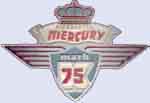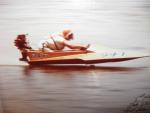Dumb question: Anyone know how to calculate the thrust in pounds of force developed by an outboard motor? (Electric OBs are rated in pounds of force, but not in hp.) I'm looking at designing a tilt system and need to know what kind of force it has to resist.
Thanks,
Jeff


 Thanks:
Thanks:  Likes:
Likes: 


 Reply With Quote
Reply With Quote




 at the transom that will effect performance. Some old timer figured this out way back.
at the transom that will effect performance. Some old timer figured this out way back.


Bookmarks